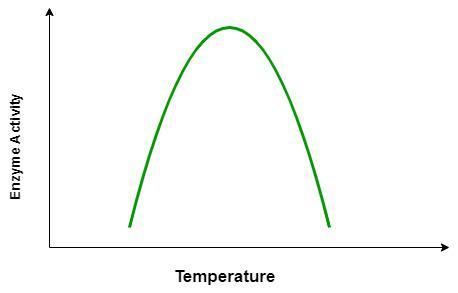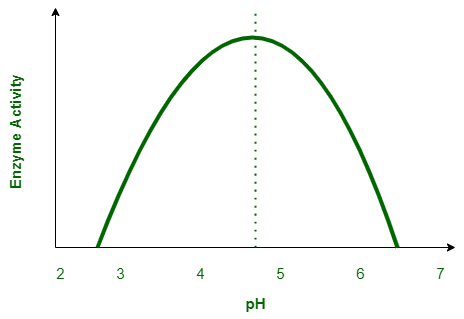
|
|
All the carbon-based compounds that are seen in or produced by living organisms and are necessary to a biological cycle are called biomolecules. Examples of biomolecules include proteins, lipids, carbohydrates, and nucleic acids. Even molecules such as metabolites are considered biomolecules. EnzymesMost enzymes found today are proteins. There are even nucleic acids that display attributes of enzymes called ribozymes. Enzymes are like proteins, wherein, it has a primary structure as well as secondary and tertiary structures. Enzymes are biocatalysts or Protein impetuses.
Properties of Enzymes
Factors Affecting the Enzymes

Firstly, as enzyme concentration increases, the rate of reaction increases. After a specific point, enzyme concentration is more than required. So, no ES complex is formed. Therefore, the rate doesn’t increase. Expanding enzyme concentration will build the pace of response, as additional enzymes will be colliding into substrate particles.

Enzyme activity is more elevated at optimum temperature. As temperature increments, at first, the pace of reaction will build, due to expanded dynamic energy. Notwithstanding, the impact of security breaking will turn out to be increasingly great and the pace of reaction will start to decline. Enzymes show a temperature ideal which is between 30 °C to 50 °C. At extremely low temperatures, the enzyme stays inactive. At extremely high temperature, enzyme gets damaged, as proteins are denatured by heat. For Example, keeping milk in the refrigerator stops curdling as enzyme activity is inactive or stopped.

Various enzymes have various optimum pH. Every enzyme works inside a seriously little pH range. There is a pH at which its movement is most prominent (the ideal pH). This is on the grounds that adjustments of pH can make and break intra-and intermolecular bonds, changing the state of the enzyme and, accordingly, its adequacy. Most enzymes have ideal pH in the scope of 4 to 9. For example, digestion-related enzymes work best in acidic ph, whereas intracellular enzymes work in neutral ph

Behavior is as similar to enzyme concentration. Expanding substrate fixation builds the pace of reaction. This is on the grounds that more substrate particles will crash into enzyme atoms, so more items will be shaped. FAQs on the Nature of Enzyme ActionQuestion 1: What are Biomolecules? Answer:
Question 2: What are some of the main purposes of biomolecules? Answer:
Question 3: What are the important characteristics of enzymes? Answer:
Question 4: What are enzymes? Answer:
Question 5: What is the specificity of enzymes? Answer:
|
Reffered: https://www.geeksforgeeks.org
| Class 11 |
Type: | Geek |
Category: | Coding |
Sub Category: | Tutorial |
Uploaded by: | Admin |
Views: | 13 |